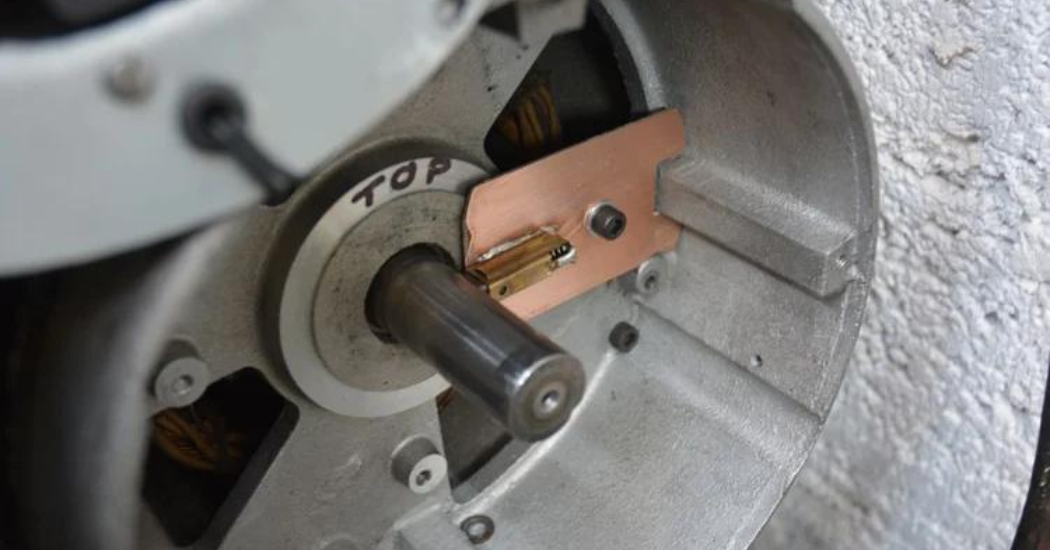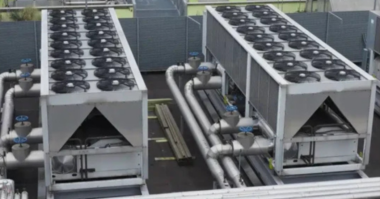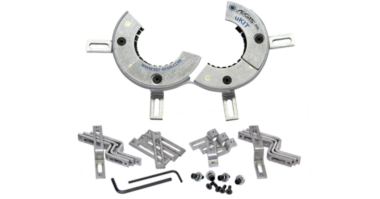By reducing voltage on a motor’s shaft, shaft grounding devices play a crucial role in safeguarding against potential damage resulting from current passing through the motor’s susceptible bearings. Voltage on the shaft can occur due to friction building up a static charge, from induction, and from leakage from within the system. Shaft grounding devices keep voltage from discharging through motor bearings by providing another, lower resistance route for the current. By creating an alternate path of least resistance, shaft grounding devices divert electricity away from components that could be harmed by this current, saving the expense of repair or replacement and the much larger potential expense of unplanned downtime.
The US Department of Energy (DOE) conducted influential studies to understand how to conserve energy in commercial and industrial motors. These studies emanated from the Motor System Market Assessment (MSMA), which began in 2016 to study motor systems in the US industry. The third volume of this report came out in 2022 and looked into improved savings due to greater energy efficiency in industrial and commercial motors. For more reading on this topic check out the following blogs:
The Importance of Shaft Grounding Devices for Motors
Quantifying savings due to energy efficiency and easier maintenance contributes to understanding the costs of owning and operating electric motors. Over the course of a motor’s lifetime, about 20 years, electricity makes up about 90 percent of the total cost of the motor. Increasing energy efficiency can lower these costs by as much as 30 percent. The rest of the costs a company bears include the initial cost of the motor, downtime for maintenance, and the price of rebuilding the motor.
An assessment by Electro Static Technology shows how these expenses play out when variable frequency drives (VFDs) are used to control motors instead of direct on-line control. Some of the savings from energy efficiency are eaten up by the cost of the VFD itself, along with higher downtime and rebuilding expenses. However, when a shaft grounding device is installed in a motor on a VFD, it brings down the cost to the company of any downtime and motor rebuilding expenditures, on top of the energy savings enabled by the VFD.
How Shaft Grounding Devices Protect Bearings
Shaft grounding devices, like the AEGIS Shaft Grounding Ring, protect motor bearings and other sensitive components from electrical damage from voltage discharge. Current follows the least resistant pathway until it reaches the ground. For motors without shaft grounding, the bearings are the path of least resistance and are susceptible to electrical damage. Arcing from shaft voltage discharge causes damage to a bearing, though reducing this discharge with shaft grounding rings makes motor bearing failure less likely.
Shaft grounding rings help to:
- Direct electrical energy away from bearings in a regulated manner.
- Protect bearings, which often offer the best path for electric current.
- Restrict the flow of current passing through other components from the motor shaft.
When bearings wear more quickly than normal, it’s likely that voltage on the shaft is the cause, which shaft grounding rings help prevent.
Bearings will likely show the following signs of damage:
- Pitting
- Frosting
- Fluting
Grounding rings divert electrical current away from internal components within a motor, providing a better path for it to reach the ground, thus preventing the need to replace parts or experience downtime.
Shaft Grounding & Variable Speed Drives
The most recent MSMA report proposed changes stemming from the ongoing promotion of energy efficiency in the industry. This has driven an increase in VFD installations in existing and new motor systems. This is despite VFDs being only about 16 percent of industrial and 4 percent of commercial motor systems as of 2016. VFD capabilities enable adjustment of motor speed so as to decrease energy use.
However, VFDs also have an adverse impact on an induction motor’s roller bearings, a problem referred to as fluting. This phenomenon occurs when grooves form in a bearing, caused by an electric current passing through the bearing from the motor’s shaft. This increases the cost of a VFD-enabled motor over time, as it increases the need for repair due to bearing and motor failure. The good news is that shaft grounding rings can largely prevent this problem. By preventing fluting and the damage it entails, manufacturers can enjoy even greater savings from increasing a motor’s efficiency.
Motors with VFDs are more likely to experience bearing failure, as the input voltage is not balanced. In motors on line power, the sine wave input voltage is balanced voltage, so the motor has no net charge. The voltage, however, is essentially unbalanced for the pulse wave modulated (PWM) waveforms that VFDs generate. This imbalance creates voltage within the motor’s structure, leading to voltage discharging from the rotor to ground through the motor’s bearings.
This may lead to:
- Downtime caused by bearing failure.
- Need for bearing replacement, which requires the replacement or removal and repair of the motor.
Cost-Efficiency of VFDs
Controlling motors with VFDs allows users to control their speed and torque. Considering the current pricing of these systems, some evaluations show their installation is likely to be cost-effective in about three-quarters of industrial and nearly half of commercial motor systems. This translates to savings of up to $4 billion annually by adopting VFD-controlled motor systems. Yet these savings would be partly negated without including shaft grounding rings to protect bearings from failure.
Preventing Bearing Failure
Grounding rings are commonly used to discharge voltage that could otherwise damage the motor bearings. This shaft grounding connects the motor’s turning rotor to earth ground through the motor’s frame. By adding a shaft grounding device before installing the motor, commercial facilities can save not only the expense not only of replacing motors with failed bearings but also lower costs from downtime. In most applications, repair/replacement costs are dwarfed by the cost of unplanned downtime.
The Economics Behind Shaft Ground Rings
The basic economics behind installing shaft grounding devices in motors is sound. These work to proactively lower the risk of costly motor repair due to premature bearing failure and resulting motor-related downtime. In fact, they’re used as cost-effective solutions in multiple industries and applications that utilize motors.
Shaft grounding rings are used for industries and in applications that include:
- Automation systems for pumps and other industrial machinery
- Cement industry
- Cleanrooms in pharmaceutical industry
- Conveyors and braking motors in distribution centers
- Cranes in ports for unloading cargo
- Gas turbines
- HVAC industry
- Marine industry
- Oil and gas industry
- Paper processing industry
- Plastics manufacturing
- Power generators
- Steel manufacturing
- Testing equipment
- Wind generators
Shaft grounding rings often outlast the motors in which they’re installed and are renowned for their ability to withstand adverse conditions. Many shaft grounding rings come with stock kits that enable them to fit into most standard motors, even with a variance in the shaft size. Grounding devices also allow for easy installation and maintenance.





Comments